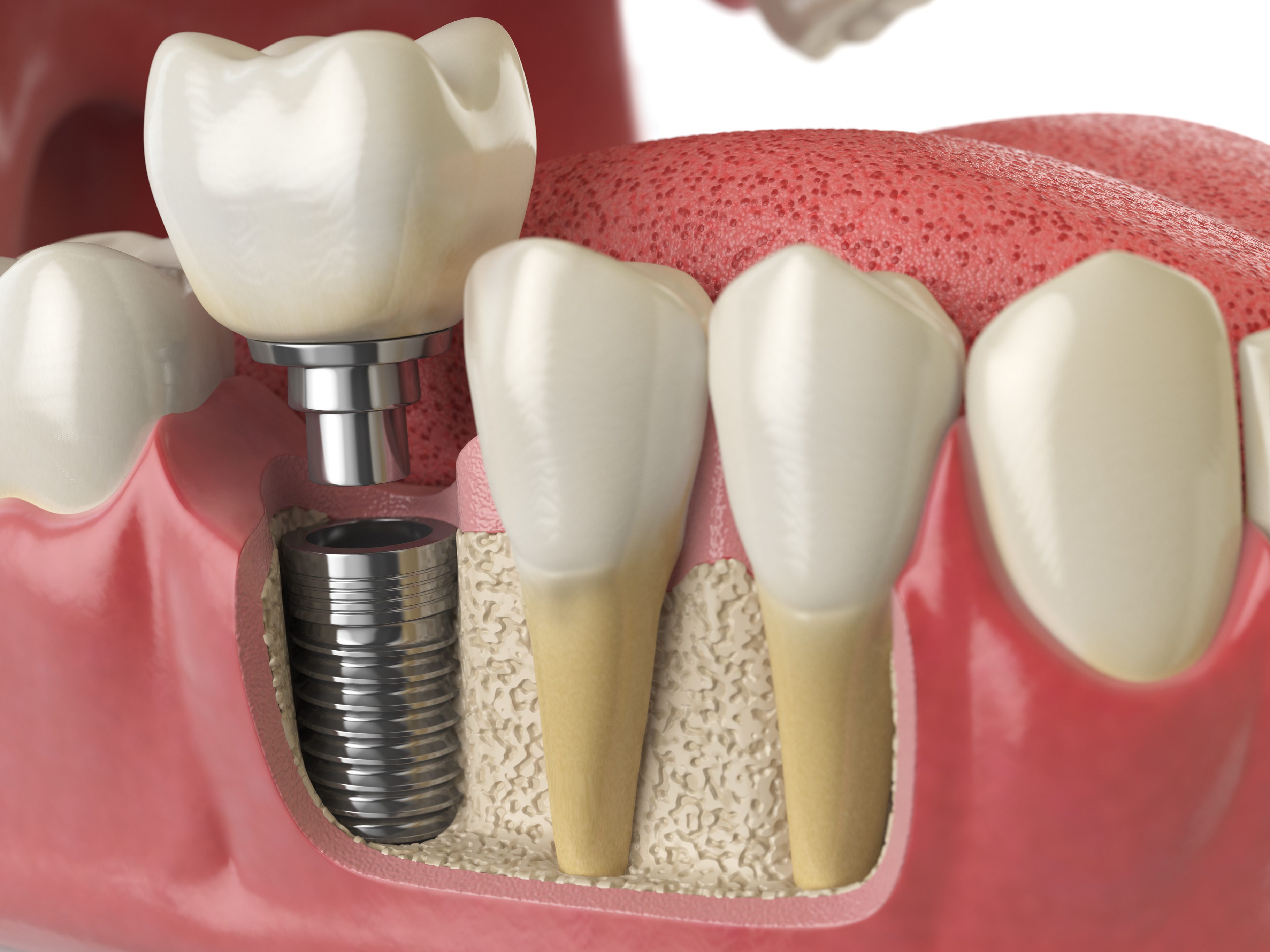How do dental implants work with your existing teeth?
Dental implants were introduced in the 1980’s as a safe, natural looking solution to replace lost teeth. They consist of a titanium screw or cylinder that is inserted into a bony socket in the jaw to act as a root for the missing tooth.
If you are looking to regain the smile that you have lost, they are the perfect solution for people missing one or more teeth. The implant will be placed in a way that looks natural compared to the existing teeth you have. A dental specialist will create an opening in your jawbone, where the implant will be placed. After the implant has integrated to the bone, it will act as a new root which will then support the crown that will be replacing your missing tooth. The crown is designed to look as similar as possible to your natural teeth. When it is attached it will fill the space left by the missing tooth to complete your smile.
Most people are considered to be good candidates for dental implants. However, in order to be suitable you must have a strong jawbone to support your new restored smile. This can be determined by a trained dental professional via testing, we send all of our patients for a CT scan in order to identify if patients have adequate bone density levels to site dental implants. Your jawbone must be dense enough and tall enough to support the crown that will be inserted. If the tests show that your jawbone structure may not be strong enough to support the implant, a bone graft may be needed. Implants are not recommended for everyone so you may be asked a series of questions prior to the procedure to check your compatibility.
Dr Peter Young has 29 years experience in dental implant surgery, having placed over 4,000 implants in his career. You can rest assured knowing that Peter and his talented team are taking care of you.

